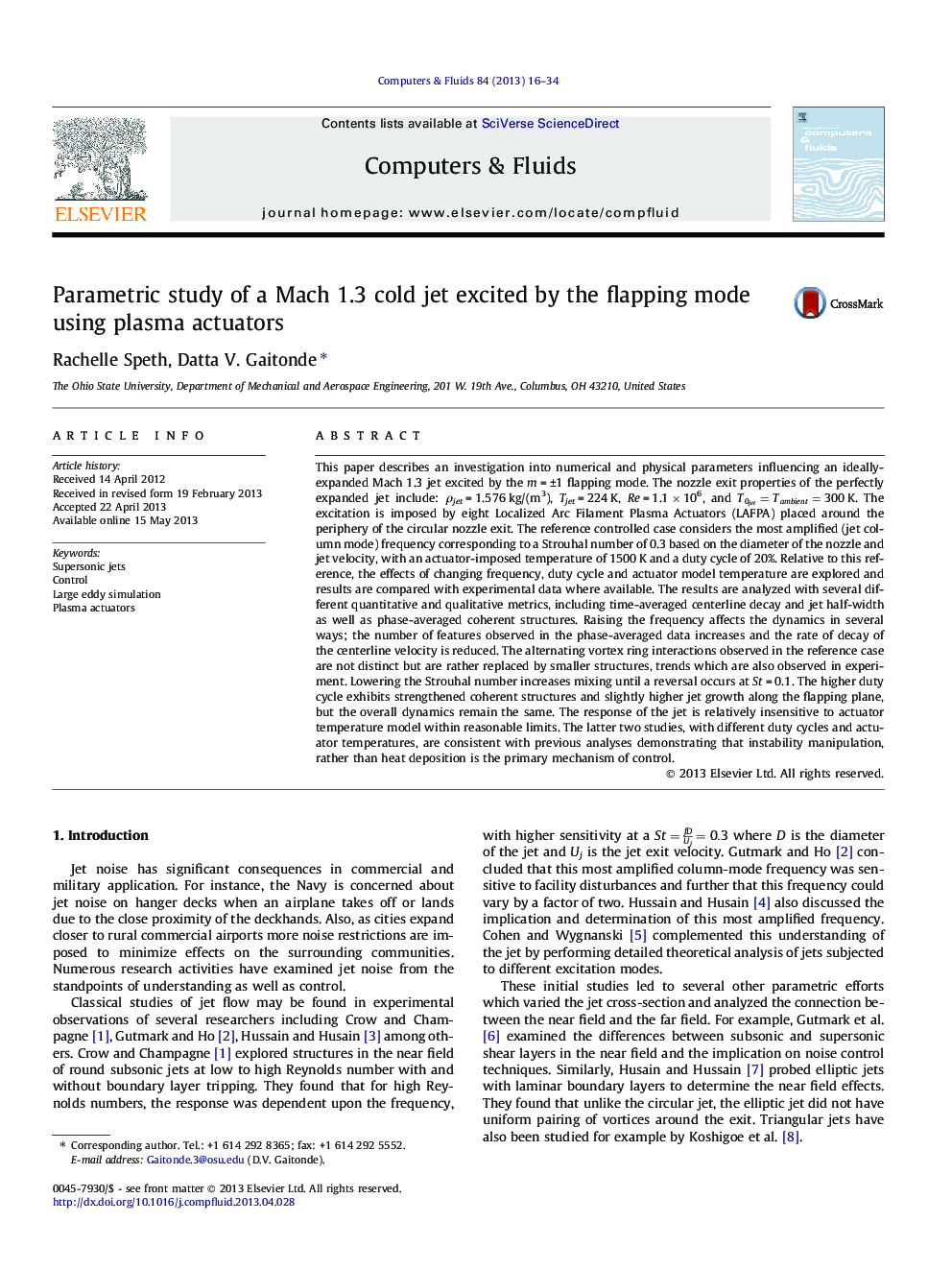| Article ID | Journal | Published Year | Pages | File Type |
|---|---|---|---|---|
| 768637 | Computers & Fluids | 2013 | 19 Pages |
•Flow control of supersonic jets with plasma actuators is investigated numerically.•Higher frequencies break up large structures and reduce near field fluctuations.•Duty cycle strengthens structures but has overall little effect.•The results are not sensitive to the actuator model.•Instability manipulation, rather than heating, is the control mechanism.
This paper describes an investigation into numerical and physical parameters influencing an ideally-expanded Mach 1.3 jet excited by the m = ±1 flapping mode. The nozzle exit properties of the perfectly expanded jet include: ρjet = 1.576 kg/(m3), Tjet = 224 K, Re = 1.1 × 106, and T0jet=Tambient=300K. The excitation is imposed by eight Localized Arc Filament Plasma Actuators (LAFPA) placed around the periphery of the circular nozzle exit. The reference controlled case considers the most amplified (jet column mode) frequency corresponding to a Strouhal number of 0.3 based on the diameter of the nozzle and jet velocity, with an actuator-imposed temperature of 1500 K and a duty cycle of 20%. Relative to this reference, the effects of changing frequency, duty cycle and actuator model temperature are explored and results are compared with experimental data where available. The results are analyzed with several different quantitative and qualitative metrics, including time-averaged centerline decay and jet half-width as well as phase-averaged coherent structures. Raising the frequency affects the dynamics in several ways; the number of features observed in the phase-averaged data increases and the rate of decay of the centerline velocity is reduced. The alternating vortex ring interactions observed in the reference case are not distinct but are rather replaced by smaller structures, trends which are also observed in experiment. Lowering the Strouhal number increases mixing until a reversal occurs at St = 0.1. The higher duty cycle exhibits strengthened coherent structures and slightly higher jet growth along the flapping plane, but the overall dynamics remain the same. The response of the jet is relatively insensitive to actuator temperature model within reasonable limits. The latter two studies, with different duty cycles and actuator temperatures, are consistent with previous analyses demonstrating that instability manipulation, rather than heat deposition is the primary mechanism of control.
